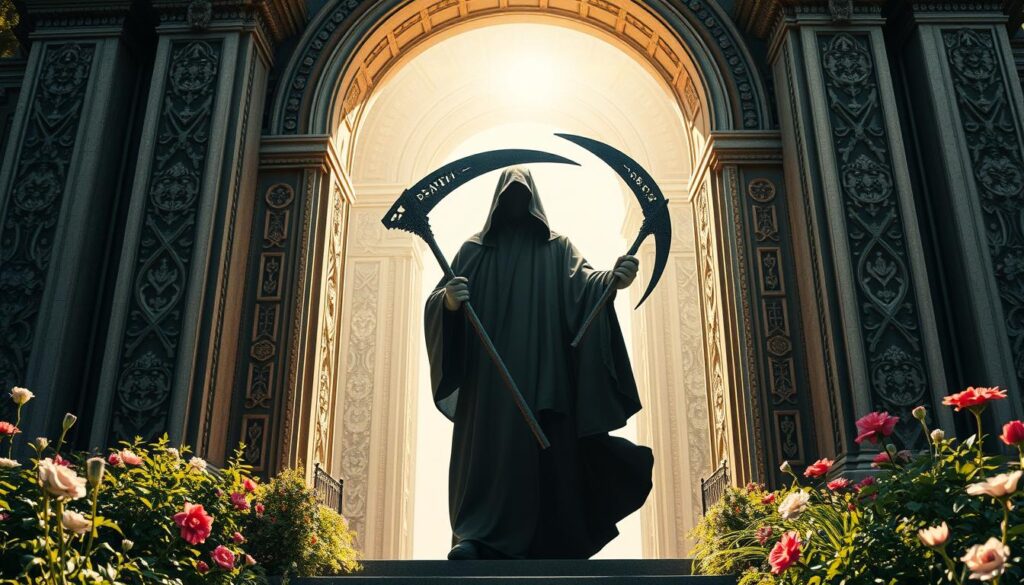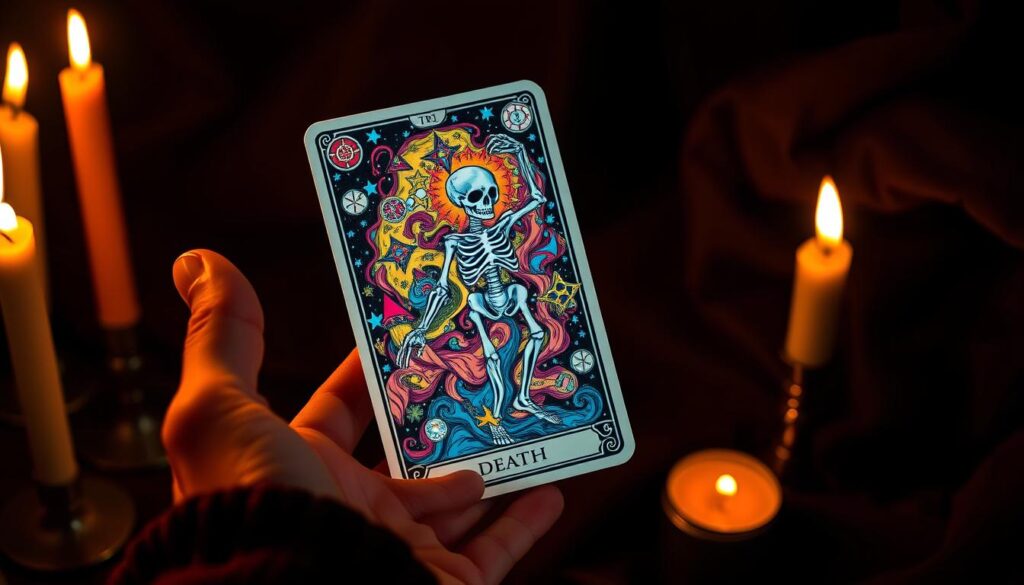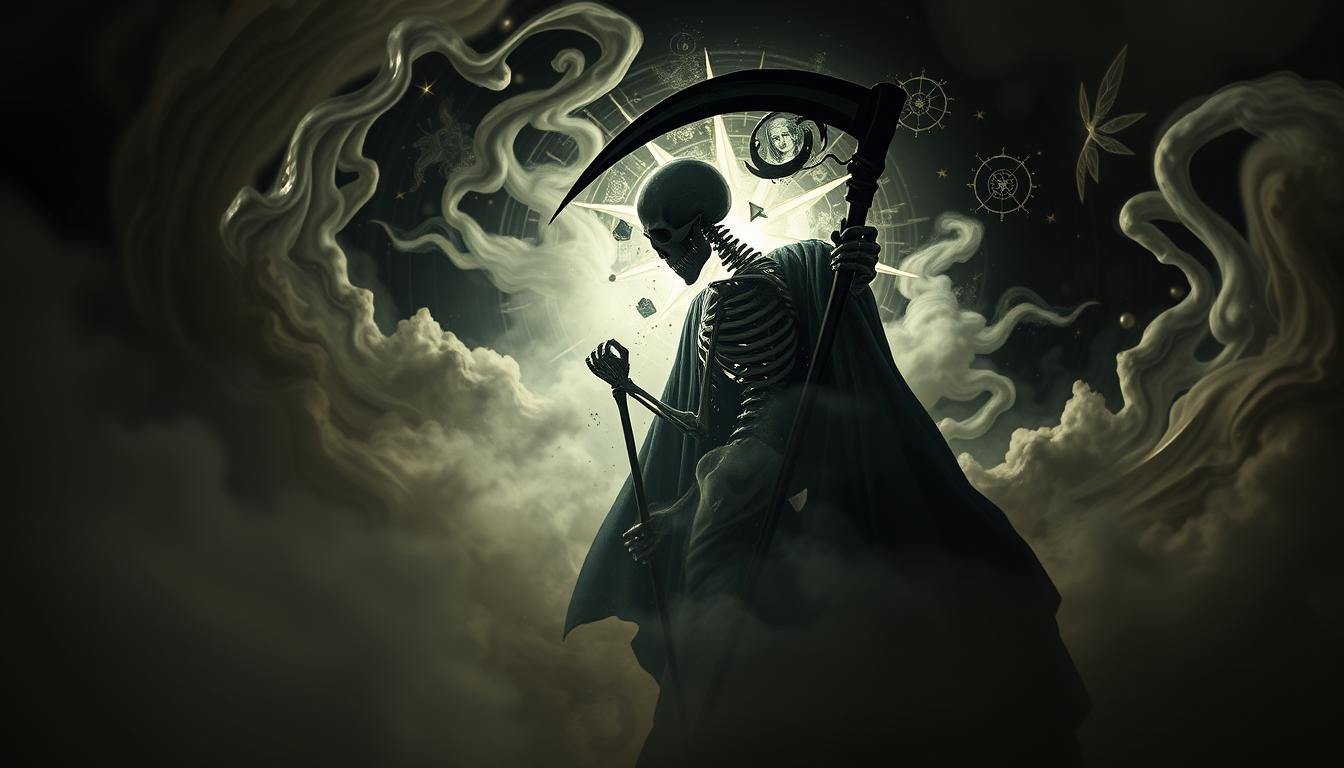The Death tarot card often sparks fear and confusion, but its true meaning is far from ominous. Contrary to popular belief, this card symbolizes transformation and new beginnings rather than physical endings. It’s a powerful reminder that change is a natural part of life, offering opportunities for growth and renewal.
Many people misinterpret the Death card due to cultural avoidance of open discussions about mortality. However, its imagery—like the skeleton rider and rising sun—reflects the cyclical nature of life. This card encourages us to embrace endings as a way to make room for fresh starts, whether in relationships, careers, or personal development.
Modern interpretations and the Death Positive Movement highlight the importance of understanding this card’s deeper message. By demystifying its symbolism, we can see it as a guide for positive change and societal transformation. Let’s explore how this misunderstood card can inspire rebirth in our lives.
Key Takeaways
- The Death tarot card represents transformation, not literal endings.
- Its imagery symbolizes the cyclical nature of life and renewal.
- Cultural avoidance of death discussions fuels misinterpretations.
- Modern movements encourage open conversations about mortality.
- The card inspires personal growth and societal change.
Debunking the Fear Around the Death Card
The Death card often triggers fear, but its symbolism is far from negative. Many associate it with literal endings, but in tarot, it represents transformation and renewal. This misunderstanding stems from cultural taboos and media portrayals that distort its true meaning.

Why Death Doesn’t Mean Literal Dying
The Death card is not about physical mortality. Instead, it signifies the end of a phase, relationship, or aspect of life. For example, the biological process of dying involves vital organ shutdown, but the card’s symbolism focuses on metaphorical endings that lead to new beginnings.
Elisabeth Kübler-Ross’s work on the stages of acceptance highlights how humans process change. Similarly, the Death card encourages us to embrace transitions, whether in personal growth or societal systems.
Common Myths That Distort Its True Meaning
Several myths contribute to the fear surrounding the Death card. One is the belief that it predicts a curse or failure. In reality, it’s a catalyst for positive change, much like cellular regeneration in the human body.
Another myth is that it signifies permanent loss. However, historical burial practices and the Death Positive Movement show how endings can lead to renewal. For instance, green burials and death doulas emphasize natural cycles and transformation.
| Myth | Reality |
|---|---|
| Predicts literal dying | Symbolizes transformation |
| Signifies failure | Encourages growth |
| Represents permanent loss | Highlights renewal |
By understanding these myths, we can appreciate the Death card’s role in guiding us through life’s inevitable changes. For more insights on tarot interpretations, visit our tarot guide.
The Symbolic Meanings Behind the Death Tarot
Transformation lies at the heart of the Death tarot card, offering a fresh perspective on change. This card’s imagery is rich with symbolism, inviting us to explore its deeper meanings. From historical rituals to artistic details, every element tells a story of renewal and growth.

Transformation as a Core Theme
The Death tarot card is often misunderstood, but its central theme is transformation. Like the natural process of decomposition feeding ecosystems, this card reminds us that endings are essential for new beginnings. It encourages us to let go of what no longer serves us, making space for growth.
Ernest Becker’s theory on the denial of death highlights the necessity of embracing change. The Death card aligns with this idea, urging us to accept life’s cycles and find strength in transitions.
Historical and Cultural Interpretations
Throughout history, cultures have viewed death as a part of life’s cycle. Ancient rituals, such as those practiced during the Day of the Dead, celebrate transformation and renewal. These traditions mirror the Death card’s message of rebirth.
Modern movements, like Caitlin Doughty’s advocacy for recomposition, emphasize the environmental benefits of natural processes. This aligns with the card’s symbolism of decomposition feeding new life.
How Artwork Clues Reveal Rebirth
The Death card’s artwork is filled with clues about its meaning. The sunrise in the background symbolizes new beginnings, while the white horse represents purity and renewal. The black armor worn by the rider signifies protection and balance during times of change.
Floral motifs in the card, such as the white rose, connect to green burial practices, highlighting the harmony between endings and new growth. These artistic elements remind us that transformation is a natural and beautiful part of life.
How to Interpret Death in a Tarot Reading
Interpreting the Death card in a tarot reading requires understanding its context and symbolism. This card is often misunderstood, but its true meaning lies in transformation and renewal. By examining its position and surrounding cards, you can uncover its deeper message.

Context Matters: Position and Surrounding Cards
The position of the Death card in a spread is crucial. In a past position, it may indicate a recent ending or transition. In a future position, it suggests upcoming change. Surrounding cards can further clarify its meaning. For example, the Tower card alongside Death may signal a sudden, dramatic shift.
Legal and ethical debates on life support parallel the ambiguity of this card. Just as these debates highlight the complexity of endings, the Death card reminds us that transitions are rarely straightforward.
Life Areas It Often Signifies Change In
The Death card often signifies transformation in specific areas of life. Relationships, careers, and personal growth are common themes. For instance, it may indicate the end of a stagnant relationship, paving the way for healthier connections.
Vital sign decline patterns can inform how we interpret these changes. Just as the body transitions through stages, the Death card reflects life’s natural cycles.
| Life Area | Type of Change |
|---|---|
| Relationships | Ending toxic patterns |
| Career | Shifting to a new path |
| Personal Growth | Letting go of old habits |
By understanding the Death card’s context and life areas it affects, you can embrace its message of renewal. Journaling prompts, like those used in legacy exercises, can help process these changes and welcome new beginnings.
Conclusion: Embracing Change With the Death Card
Change is inevitable, and the Death tarot card reminds us to embrace it with courage. It’s not about endings but about transformation. By letting go of what no longer serves us, we make space for new beginnings.
Many people find comfort in rituals like wakes or vigils, which model healthy transitions. You can create your own rebirth rituals using the card’s imagery. For example, journaling or meditating on its symbols can help you process change.
The Death Positive Movement encourages open conversations about life’s cycles. Resources like Caitlin Doughty’s TED talks or local death cafes can deepen your understanding. These practices remind us that transformation is a natural part of life.
Finally, consider daily card meditation to stay ready for change. As the card teaches, transformation requires release. Embrace it, and you’ll find strength in every new chapter. For more insights, explore our tarot guide.

